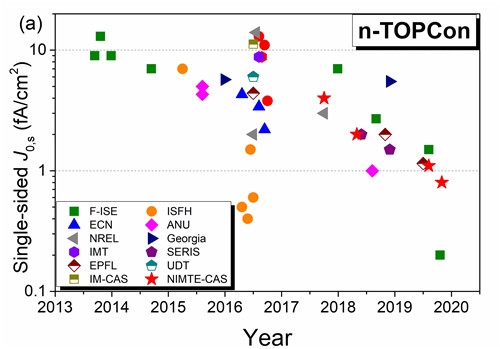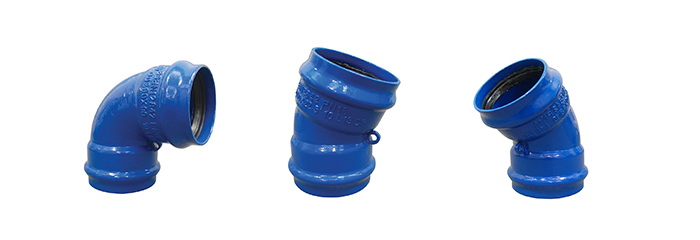[ Instrument Network Instrument R & D ] Polysilicon passivation contact technology (commonly referred to as TOPCon, also known as POLO, PERPoly, monoPolyTM, iTOPConTM, PERTOPTM) is widely regarded as one of the promising next-generation high-efficiency crystalline silicon battery technologies after PERC Is the research focus in the field of crystalline silicon solar cells. Under the leadership of researchers Ye Jichun and Yan Baojie, the research team of solar energy and optoelectronic devices of Ningbo Institute of Materials Technology and Engineering of the Chinese Academy of Sciences, with the joint efforts of Zeng Yuheng, Liao Mingdun and other team members, began to study TOPCon technology at the end of 2015. The core personnel of the team have accumulated more than 30 years of industry experience, focusing on the close combination of basic research and industrial application needs, and aiming to provide theoretical and practical support for the industrialization of the technology. Recently, the Ningbo Material Institute team has made significant progress in the development of high-performance passivation contact technology, efficient full-cell integration, key material development, and verification equipment development.

In terms of the development of high-performance passivation contact technology, Ningbo Institute of Materials Technology used a combination of high-quality interfacial silicon oxide, dense polysilicon films, optimized doping profile, and efficient hydrogen passivation to obtain excellent passivation contact indicators (using single-sided saturation) The current density J0, s and the implicit open-circuit voltage iVoc are used for characterization. The lower the J0, s, the better, and the higher the iVoc, the better). The key passivation index of n-type technology is the lowest J0, s = 0.8fA / cm2, iVoc = 749mV (Sol. Energy, 2019, 194, 18); the key passivation index of p-type technology is the lowest J0, s = 6.0fA / cm2, iVoc = 722mV (Sol. Energy Mater. Sol. Cells, 2020, 210, 110487), which is at the international advanced level. It shows the progress of the major research institutes in the world on key passivation indicators (J0, s).
In terms of high-efficiency battery development, Ningbo Institute of Materials Research insists on independent research and development in the laboratory. After years of hard work, in January 2020, it developed an n-type TOPCon battery (independent test by Nankai University) with an efficiency of 24.27%. It shows the efficiency progress of this type of battery by the major research institutions in the world. It is worth mentioning that the efficiency battery integrates new materials, while the efficiency of the conventional control battery is only 24.02%, as shown. According to statistics, the average efficiency of batteries using new materials is 0.32% abs higher than that of conventional batteries (in the preparation of the paper). Ningbo Institute of Materials Technology registered this new type of passive contact battery as a PERTOPTM battery (Passivated Emitter and Rear Tunnel Oxide Passivation).
In terms of key material development, Ningbo Material Institute has also done a lot of research work. Aiming at the interfacial silicon oxide layer, Ningbo Institute of Materials has experimentally evaluated various methods for the preparation of silicon oxide, including nitric acid oxidation, ultraviolet ozone oxidation, ozone water oxidation, mixed acid oxidation, thermal oxidation, plasma-assisted oxidation, and atomic layer. Deposition, plasma deposition, magnetron sputtering oxidation, etc. The research shows that the thickness and composition of the silicon oxide obtained by different methods are different, but the saturation current density of the n-type TOPCon structure obtained by using the above silicon oxide material can be less than 12fA / cm2 as long as the reasonable subsequent process is matched. , Part can be lower than 2fA / cm2, which can meet the needs of industrial production. It is worth mentioning that Ningbo Material Institute developed a plasma-assisted in-situ oxidation method for the in-situ silicon oxide preparation technology that is urgently needed for the PECVD process route. The silicon oxide material was used to obtain excellent passivation and contact properties. The index of type silicon wafer is J0, s = 2.0fA / cm2, iVoc = 747mV (Sol. Energy Mater. Sol. Cells, 2020, 208, 110389), and the index of p-type silicon wafer is J0, s = 3.0fA / cm2, iVoc = 742mV (Sol. Energy Mater. Sol. Cells, 2019, 200, 109926); By optimizing the preparation technology of silicon oxide, a p-type TOPCon structure with excellent passivation is obtained. The index of n-type silicon wafer is J0, s = 6.0fA / cm2, iVoc = 722mV (Sol. Energy Mater. Sol. Cells, 2020, 210, 110487), which is also one of the indicators obtained by using the PECVD route so far. In terms of polysilicon preparation, Ningbo Material Research Institute has also used various approaches to experimentally evaluate the technical routes of PECVD, LPCVD, Sputtering, and E-Beam. Based on the understanding of the advantages and disadvantages of different technology routes, Ningbo Materials chose to focus on the PECVD technology route, in terms of film formation conditions, doping control, crystallization control, stripping suppression, and square resistance adjustment based on PECVD doped amorphous silicon. We have accumulated rich experience and prepared TOPCon structure with excellent performance.
To sum up, Ningbo Material Institute has carried out systematic research on the basic scientific issues and industrial application of TOPCon technology, and some key indicators and battery efficiency have made significant progress; as of March 2020, it has been included in the industry's mainstream journal Sol. Energy Mater. Sol Cells, Sol. Energy, Sol. RRL, etc. published 14 journal articles; initially formed independent intellectual property rights; jointly with the Chinese Academy of Sciences to complete a "2019 TOPCon solar cell analysis report"; currently based on joint development The mass production equipment of the PECVD technology line aims to solve the problem of lack of core equipment in the industry.
This research was supported by the National Key Research and Development Plan (2018YFB1500403), the National Natural Science Foundation of China (61874177, 61974178), and the Zhejiang Natural Science Foundation (LY19F040002).
PSL MOPVC Double Socket Bend is produced for using PVC pipe to switch connection: Every socket part is assembled with EPDM rubber gasket, to insure seamlessness of connection between PVC pipes and fittings. The using method is very convenient. As each product is equipped with EPOM gasket, just insert the PVC pipe into fittings. We offer these Double Socket Bend and Double Flanged Bend in different sizes and lengths in order to meet the various requirements of our esteemed clients.

Mopvc Double Socket Bend,Mopvc Double Socket Elbow,90 Degree Double Socket Bend,Double Socket Bend,Double Flanged Bend
SHANDONG PIPESOL FLOW EQUIPMENT CO.,LTD , https://www.sinopipesol.com